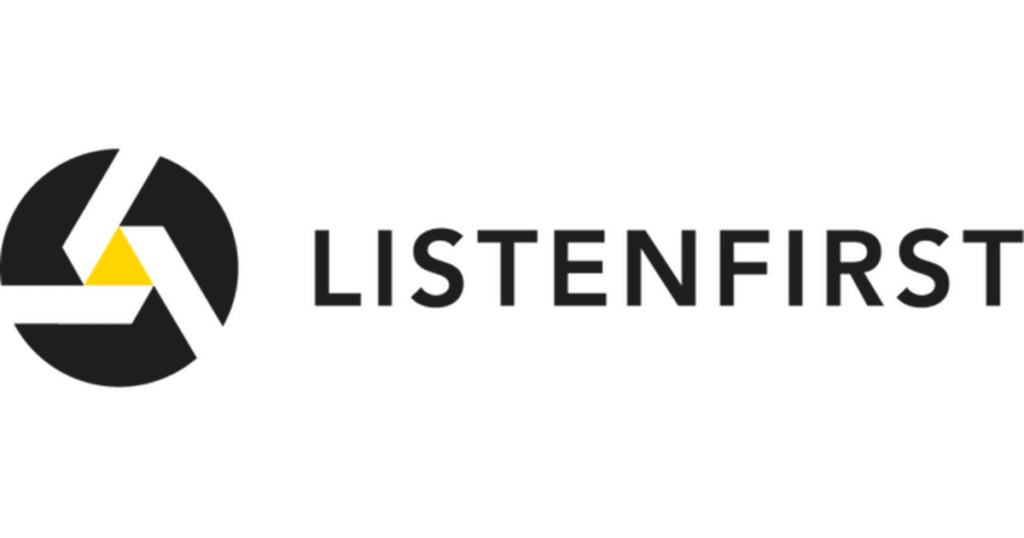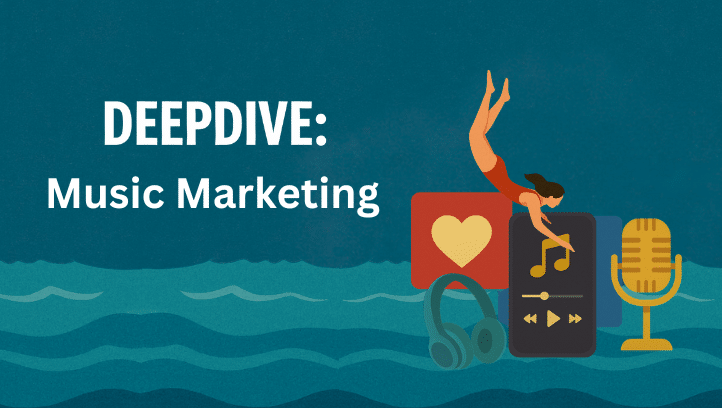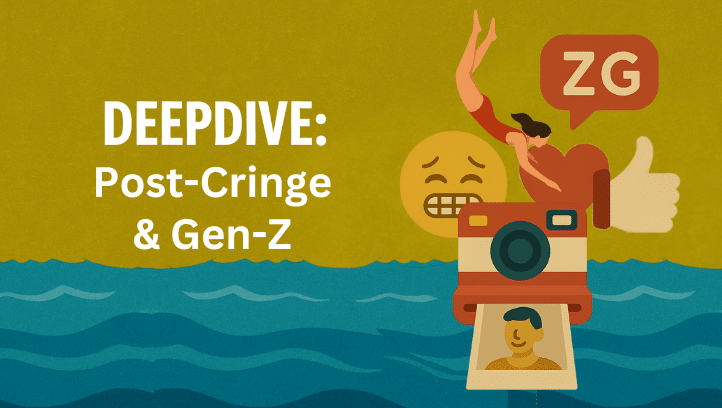Looking to get started with social media and wondering where to begin? Here is your guide.
Social media is no longer an ancillary marketing channel for brands to explore. In a world where content continues to reign king, an effective social media marketing plan is critical to your brand’s success.
The right social media marketing plan serves as a guide to achieving your desired marketing goals. By incorporating key audiences and personas, core tactics, assigned roles and responsibilities, and critical social media KPIs, you can identify and track your brand’s success.
The first step? Getting started.
That’s why ListenFirst created a simple guide to kickstart your social media marketing strategy. Let’s dive in.
- What is social media marketing?
- What are your goals?
- Who is your audience?
- What social media content will you share?
- What times will you post?
- How will you measure success?
- How will you measure your progress?
- How will you optimize your strategy?
- How to get the entire company sharing?
- Are you ready for prime time?
What is Social Media Marketing?
Social media marketing focuses on creating relevant content for social media platforms that connects with your audiences, drives engagement, and increases brand awareness.
While there are infinite variations of this definition, the bottom line is social media marketing is about engaging customers in a relevant, authentic way to help them understand your business, connect with your brand, and ultimately drive leads and increase sales.
Today’s brands understand the increasingly indispensable role of social media marketing. According to our 2022 Social Media Trends Survey Report, more than 55% of brands surveyed increased their social media spend during the first two years of the pandemic. And just over half of brands planned to increase spending further during 2022.
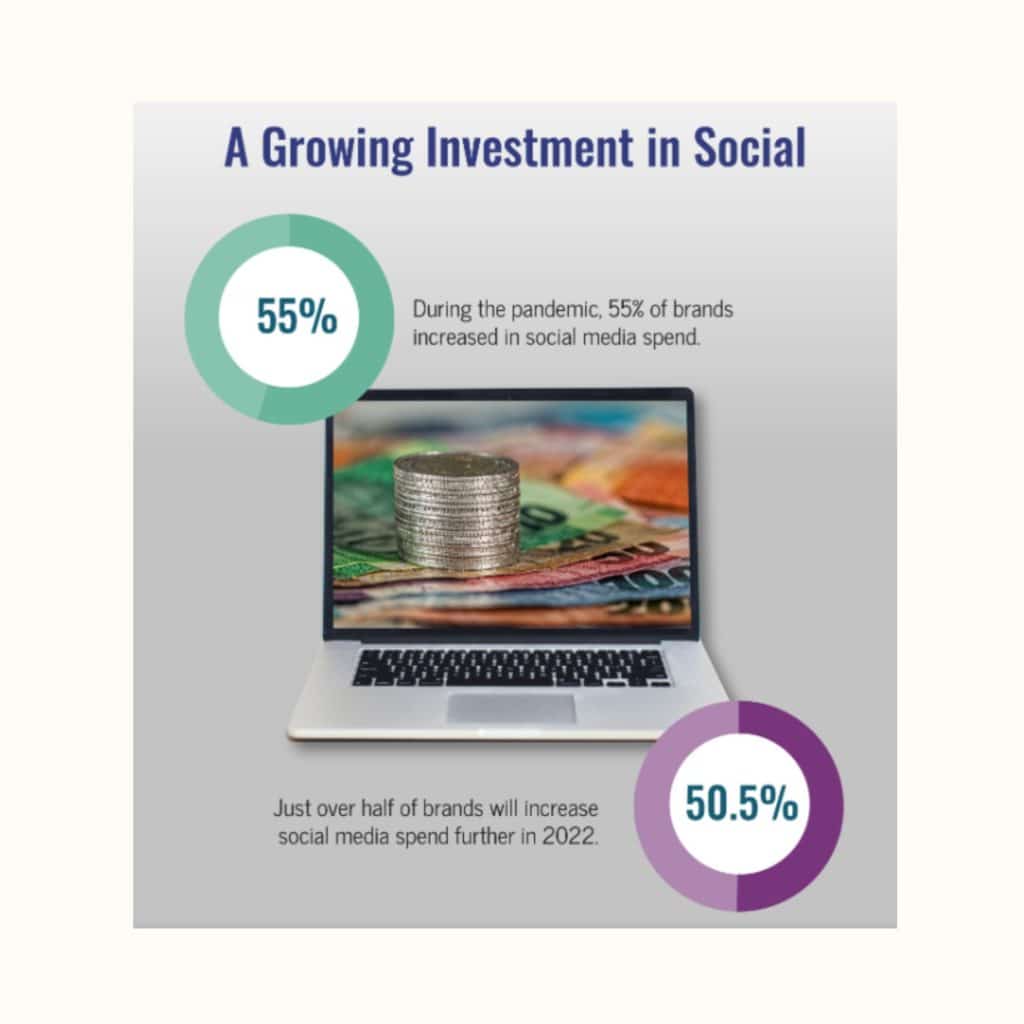
What Are Your Goals?
Setting tangible, measurable social media goals is key to success.
Only 14% of marketers can always tie social media efforts to ROI. Being able to set clear goals around what signifies social media success and accurately measure performance is essential for an effective social media campaign.
Think big. Ensure your plan aligns with overall business goals.
- Do you want to grow awareness? Consider goals related to audience growth.
- Are you set on increasing brand affinity and loyalty?
- Set a target for engagement rates. Is brand love your focus? Aim for a positive social sentiment.
Incorporate short-term and long-term social media goals into the mix and plan to benchmark progress along the way.
As the infamous business strategist Tony Robbins put it, “Setting goals is the first step in turning the invisible into the visible.”
Who is your audience?
Identifying your audience and persona research.
While it may seem obvious, audience and persona research is a step that is often overlooked when developing a social media marketing plan. To create impact, know your target audience so you can customize content to fit their specific needs and interests.
Here are some key elements to consider:
- What platforms do they use?
- When do they use these platforms? Why?
- What content do they engage with?
- What other brands and/or influencers are they following?
- What inspires emotions?
The right social media analytics solution can provide the full picture of these insights for your brand – quickly and easily. This video explains how.
Creating Personas
Go one step deeper and develop research-based personas to bring your target audience to life. Classify your customers into specific groups based on their desires — and plan to tailor your content accordingly.
A persona can include your ideal customer’s role, their goal, and their segment:
Role
A customer’s job description, responsibilities, tasks, and external factors related to their interaction with your service. These factors typically relate to business, work and productivity.
Goal
What the customer is trying to achieve. Goals have a timelessness that roles do not, and should be differentiated from “tasks.” For example, for an online shoe shopper an easy registration process is not their goal, it is a task on the way to buying shoes.
Segment
Characteristics the customer shares with many other customers such as demographics, psychographics, attitudes, and/or behaviors.
Research-based persona categories may revolve on a single main descriptor, for example, a Gen Zer who regularly watches reality TV on Netflix. Or a main descriptor with multiple sub-elements, for example, a Gen Zer who regularly watches reality TV on Netflix, spends time gaming, and gets their news from Instagram.
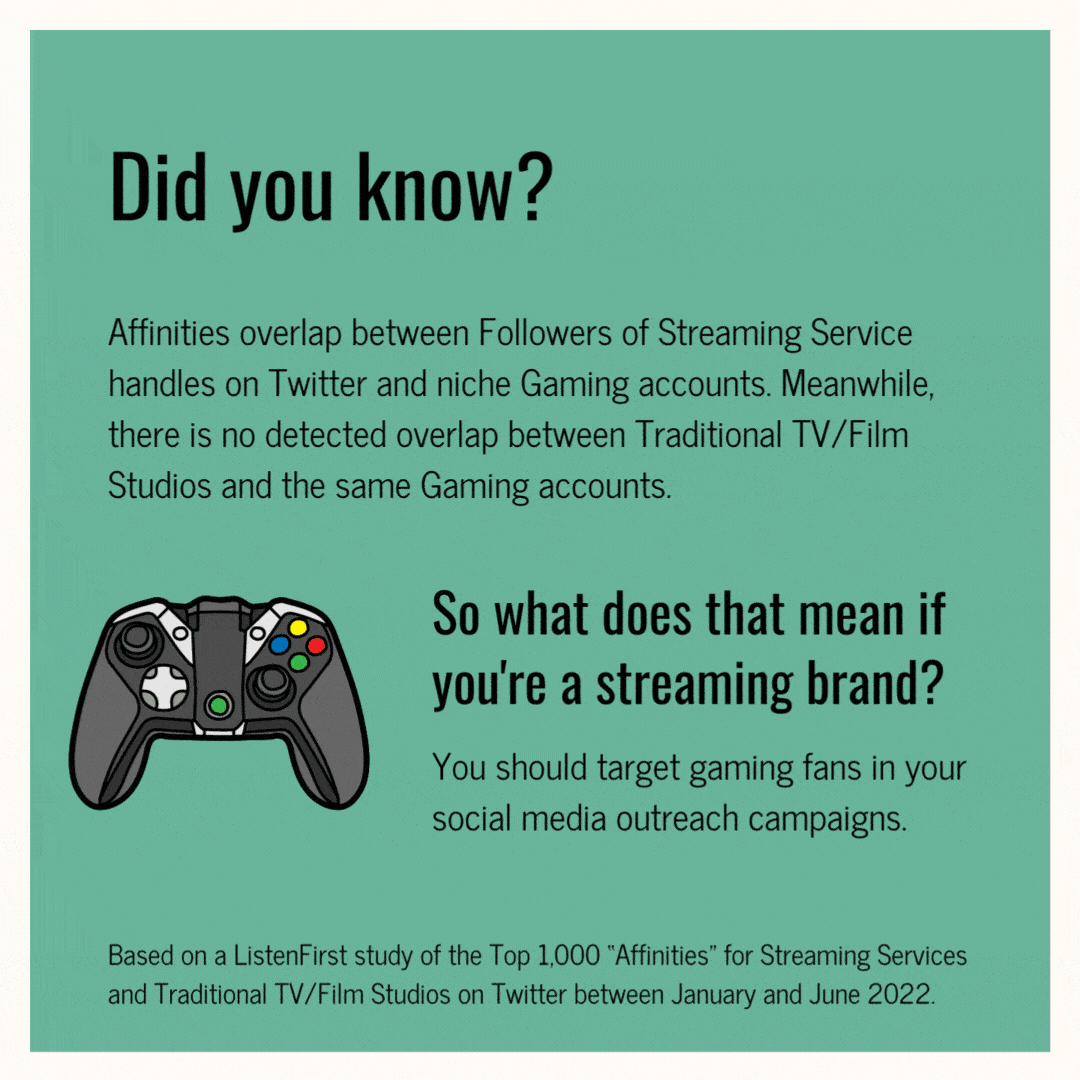
There are many tools that can help you glean insight from your target audiences and create buyer personas.
It pays to use an in-depth social media analytics solution to easily view audience insights for each social media platform. A comprehensive dashboard, like the one shown below, can help you establish a baseline of competitive audience demographics, languages, geography, and brand affinities to craft the most high-impact, tailored social media marketing plan. Additionally, it can provide in-depth knowledge of current campaigns and what your audience is responding to and why.
The right social media analytics solution can also help you reach new audiences by identifying new trends in your industry to maximize the number of people you reach.
Discover which brands, people, events, and influencers your audience finds interesting, and use that to inform your messaging and creative. By doing so, you can form more targeted, successful partnerships. Plus, you’ll learn how to create engaging content to keep your customers interested.
What Social Media Content Will You Share?
Knowledge is power. Once you have a deeper understanding of your audience and buyer personas, you can develop shareable content that resonates.
But with social media trends ever-changing, what kind of content is the question? Here is some inspiration to help.
Humanize your brand
By now, you should have a specific “voice” for your brand. Be consistent in tone, and don’t be afraid to show the behind-the-scenes processes, the day-to-day work culture, and other aspects of your brand that make it truly unique.
For example, Ben & Jerry’s is a brand who sees politics and social justice as very central to their culture, with them donating 7.5% of their earnings to social causes. These values are also front and center in some of their most popular social media posts. Their top performing post in April 2022 was an Instagram Gallery about cannabis justice that got 191,916 engagements, while their top performing post in June 2022 with 105,541 engagements was an Instagram post outlining their disagreement with their parent company selling their ice cream in the Occupied Palestinian Territory.
User-generated content
We’ll talk later about how to get the entire company involved in sharing, but when it comes to user-generated content, think about some of your biggest brand advocates — your customers. Can they provide reviews, or use a specific hashtag to share experiences with your brand?
One of the most successful examples of brands using user generated content is the TikTok user Nathan Apodaca, who went viral on TikTok, for a video where he’s drinking Ocean Spray Cran-Raspberry juice and singing along to a Fleetwood Mac song while on a skateboard. Ocean Spray shared his video on their Instagram account where it got 102,013 engagements. Additionally, the top performing social media post of 2020 for Ocean Spray with 163,096 engagements was a follow up Instagram video where they gave Apodaca a new car.
As new forms of content continue to surface, it’s important to keep your finger on the industry’s pulse to uncover the latest trends. Right now, here are some forms of content your brand should consider.
Short-form video
With the advent of TikTok and Instagram Reels, it’s no secret that video should be top of mind. According to research, the average person will spend 100 minutes a day watching online video.
Short-form video content, in particular, is what social media consumers most resonate with — and research shows time and again that they get the highest conversion rates.
How dominant is short form video for brands at this point? Between January – July, 2022, 58% of the top 100 social media posts by episodic TV brands with the most engagement were published on TikTok. That includes the top performing post, a 12 second Tonight Show TikTok video featuring Noah Schnapp and Maya Hawke from Stranger Things that got 8,367,300 engagements.
It’s not just brands that are inherently video focused benefiting from sharing short form video through TikTok. The 5 social media posts that generated the most engagements for fashion brands between January and July 2022 were all TikTok videos.
Paid partnerships with influencers
According to Forbes, “influencer marketing is stronger than ever; brands are projected to spend $15 billion on influencer marketing during 2022.”
As social networks like Instagram and TikTok make the in-app shopping experience more seamless, this creates a wealth of opportunity for brand partnerships to thrive with shoppable products at their fingertips.
Images and Galleries
While video is here to stay, images are still an important and essential part of the social ecosystem. In fact, as Instagram continues to push video content, they are seeing a backlash from many users with a desire to bring back more images.
When thinking about your content flow, aim for galleries over a single static image. In a recent webinar, Top 5 Social Media Trends Driving Brand Engagement, we found that during August 2021, 33.5% of engagement on brand content was coming from gallery posts compared to only 18.9% of engagement happening on single image posts.
What Times Will You Post?
As the saying goes, “timing is everything.” Yet on the flip side, there is no one size fits all solution for the perfect time to post content on social media.
A social media analytics feature like our Instant Insights can help you determine the right times for your brand. It will give you the core elements, like the best time of day, day of the week, words, emojis, and hashtags that make up the best performing social media content.
For example, in a recent report focused on hospital brands, data showed that 56% of all industry Reels are posted between 11 a.m. to 4 p.m., resulting in some of the lowest average engagement on videos. As a result, we recommend hospital brands post their Reels between 3 a.m. and 6 a.m.
By benchmarking performance against your brand’s historical performance and competitors’ performance, brands can get a clearer picture on what posting windows makes the most sense for them specifically.
How Will You Measure Success?
As management guru, Peter Drucker, said, “You can’t manage what you don’t measure.” Yet many brands still struggle with proving the value of their social media marketing campaigns. The key to successful measurement hinges on leveraging social media analytics.
Set social media marketing KPIs that align with your business goals
When it comes to setting social media marketing KPIs that will have an impact, less is more. Start with your business goals. Ask yourself, how do those translate into social metrics or outcomes?
Identify metrics that matter
It’s critical to do industry research prior to determining the most logical social media marketing KPIs for your brand.
Of course, you want to look at historical trends for your brand as well as for your competitors. But there’s also a lot to gain from reviewing other aspirational brands who’ve accomplished what you’re after. Even if the brand is not a player in your industry, understanding benchmarks across industries will give even more context on performance goals and best practices.
Then ask yourself, what’s a reasonable expectation for your brand based on the historical data and performance across other brands? Focus on metrics that speak to non-paid audience activity around your brand such as Interest Score, and look at metrics that normalize audience size, such as Response Rate, which shows engagement relative to the number of followers your brand has.
The ListenFirst report How to Maximize Social Media Analytics provides more details on how to identify the metrics that matter.
How Will You Measure Your Progress?
Social media KPIs are crucial to your brand’s success. A data-driven approach will help in measuring social media engagement as well as your goals, and continuously improving upon them.
Reporting is key to tracking your progress.
Reporting that allows you to see all of your cross-channel data in one view is essential. You’ll also want to set up reporting that will allow you to see the most important metrics, including your benchmarks and historical trends, at a glance.
Dashboards are a great way to communicate the story the data is telling to your key stakeholders. Configurable dashboards are an invaluable tool that allows users to build a series of dashboards to best match their team’s goals.
How Will You Optimize Your Strategy?
The social media landscape is ever-evolving. The TikTok “revolution” serves as a prime example of this. Brands that want to stay relevant to today’s consumer must constantly work to optimize their social media marketing strategy.
Tap into audience sentiment
A sentiment data analysis can help identify opportunities or trends impacting your brand. Once you understand how your audience is feeling and why, you can gain a better sense of what you need to do to change the course of your plan or campaign.
Refine your creative content
Once you’ve nailed down your audience, it is crucial to ensure you are continuously engaging them. Make changes if needed as you discover what inspires action.
By focusing on elements such as color, product, talent or layout that perform best, you can create more impactful campaigns.
Instant Insights from ListenFirst helps you optimize your visuals and messaging, so your content always delivers against your goals.
How To Get The Entire Company Sharing?
Employees should always be seen as a valuable asset. But when it comes to your social media marketing plan, did you know employees are one of your most powerful tools to achieving success?
According to The State of B2B Social Media Marketing Report, nearly 50% of CMOs said that employee advocacy was their best-performing social initiative. Their second highest-performing social initiative was social selling, coming in at 32% — another form of employee advocacy.
So how do you get your employees to walk the walk? Here are a few simple tricks.
Create a social culture
Ensure that your employees can access the appropriate and relevant social media channels at work – and that they feel comfortable doing so. This creates a more social media-friendly culture, where employees will be more apt to share your company content.
Share third-party content
Relevant and credible third-party content is a great way to build thought leadership and bring more attention to your social media feeds. Think about content related to your industry or community. Make sure you tag the appropriate organizations and/or thought leaders to extend your content to a larger network.
Connect employees to the vision
Your vision isn’t for management and management alone. Share your social media marketing goals more broadly, and explain how they tie into your brand’s overarching strategy. Employees will buy into these goals and be more motivated to work toward them as a team.
Notify your team
Many social media networks, like LinkedIn, now have features to notify your employees when you make a post. Take advantage of this feature to cast your message – and encourage more reach and engagement.
Recognize employee contributions
Are you employees making strides in social media sharing? Whether it’s a virtual high five or a company shout-out, be sure to let them know their efforts are seen and appreciated. Positive reinforcement will encourage your employees to continue to engage and spread your brand’s message.
In 2021 for example, the top performing Tyson Food content on social media was a Facebook post that got 67,493 engagements about Jeannie, a team member who secured 1.4 million meals for military families. Overall in 2021, the 43 posts Tyson Foods shared using the #TysonTogether hashtag promoting their employees averaged 2,501 compared to their 195 posts not using that hashtag averaging only 98 engagements.
Are You Ready for Prime Time?
Is your social media marketing plan ready for prime time?
Our premier social media analytics solution can help you unlock social insights, optimize social media marketing, and maximize social media ROI. To learn more about ListenFirst, you can request a free demo.
